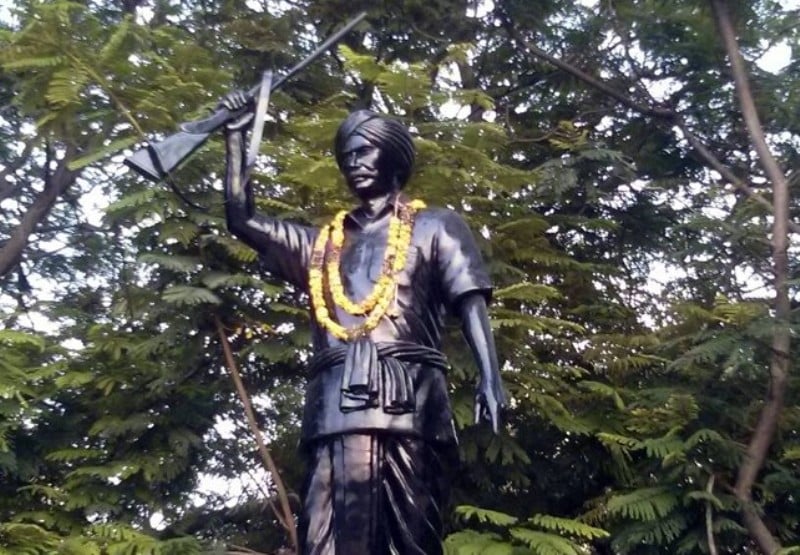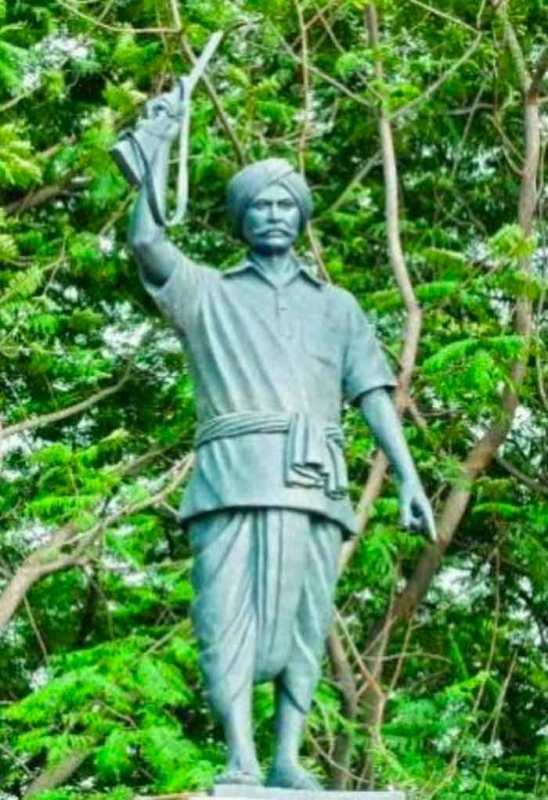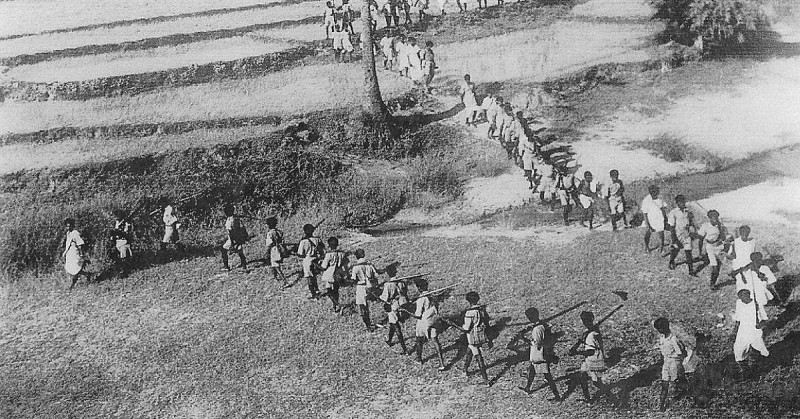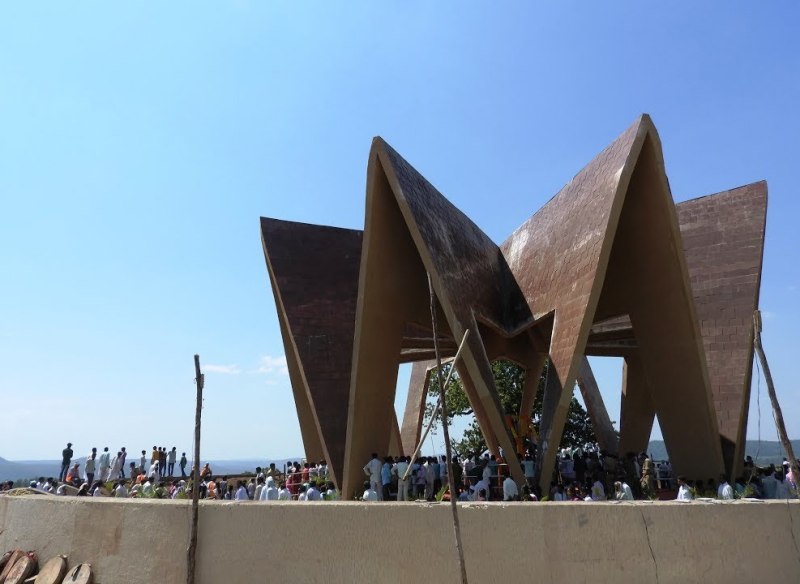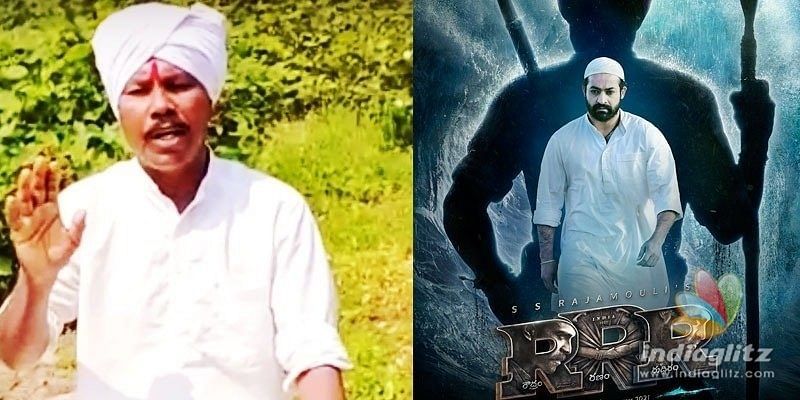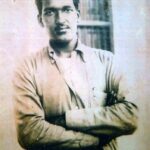Komaram Bheem Age, Death, Wife Children, Family, Biography & More
| Bio/Wiki | |
|---|---|
| Real name | Kumram Bheem [1]The Hindu |
| Profession | Freedom Fighter |
| Known for | Being the rebellion against the Hyderabad State and the British Raj in the 1900s |
| Personal Life | |
| Date of Birth | 22 October 1901 (Tuesday) [2]The Quint |
| Birthplace | Sankepalli, Hyderabad State, British India (present day Telangana, India) |
| Date of Death | 27 October 1940 |
| Place of Death | Jodeghat, Hyderabad State, British India |
| Age (at the time of death) | 39 Years |
| Death Cause | Killed in the open fire by the Britishers [3]The Better India |
| Zodiac sign | Libra |
| Nationality | British Indian |
| Hometown | Sankepalli, Hyderabad |
| Educational Qualification | He was not formally educated. [4]Vedantu |
| Relationships & More | |
| Marital Status (at the time of death) | Married |
| Family | |
| Wife | Som Bai [5]Adivasi Resurgence |
| Children | Grand Son- Sone Rao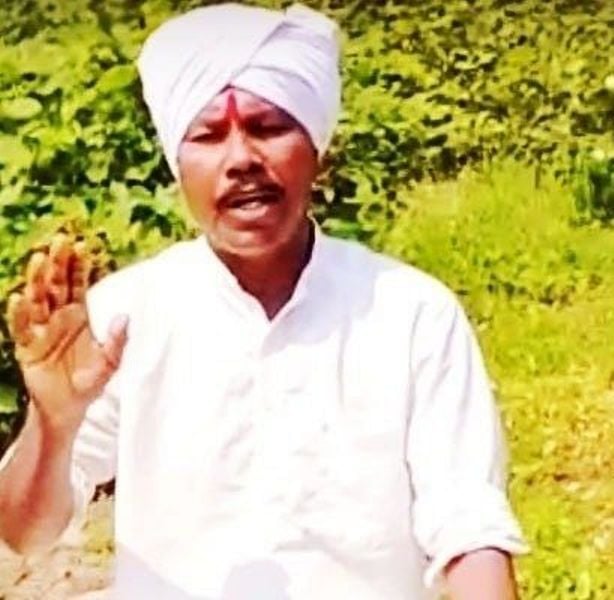 |
| Parents | Father- Komaram Chinnu Mother- Name Not Known |
| Siblings | Younger Brother- Kumra Jangu [6]The Hindu Sister-in-law- Kumram Tuljabai 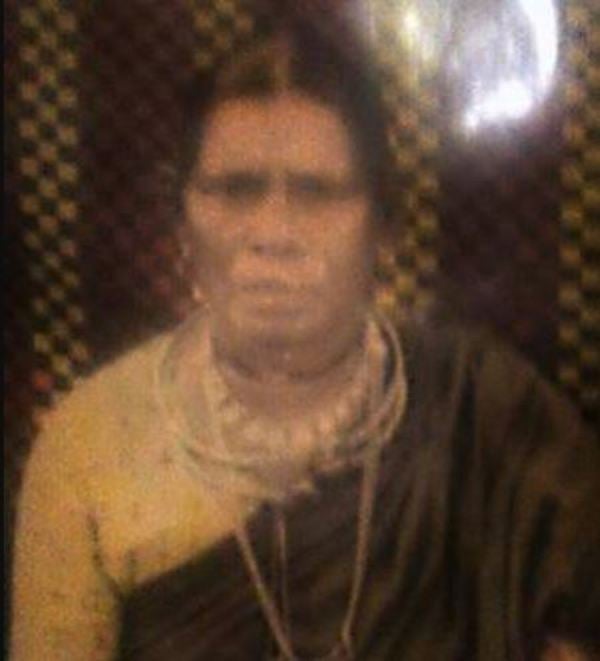 |
Some Lesser Known Facts About Komaram Bheem
- Komaram Bheem was a revolutionary Indian freedom fighter. He belonged to the Gond Tribes (now officially designated as Scheduled Tribes) of central and south-central India. Komaram Bheem, the Gond leaders, and the community revolutionaries of Hyderabad are known for fighting against the local rule ‘Nizamat.’ Komaram Bheem raised his voice against the British Raj after the 1920s and formed his own rebel army that eventually merged with the Telangana Rebellion in 1946. In 1940, he was killed by armed British police officials. His killing is remembered and praised as a symbol of rebellion among the Adivasi and Telugu folklore. He is worshipped as a god who penned the Gond culture. He raised the slogan ‘Jal, Jangal, Zameen’ (means Water, Forest, Land) that was recognised as a symbol against encroachment and exploitation of the Britishers. This slogan acted as a call to action for various Adivasi movements in the Telangana state.
- Komaram Bheem was born and raised in the tribal populated forests of the Chanda and Ballalpur kingdoms of India. These areas were isolated from the rest of the world. Komaram Bheem and his family members used to shift from one place to another throughout their whole lives as the local zamindars and businessmen kept on exploiting the local Gondi people with the help of the local forest people by extorting them. [7]Adivasi Resurgence
- The state authorities introduced and strengthened their regulations and also expanded the mining activities in the Gondi region that halted the livelihood of the Gondi people in the 1900s. The taxes were imposed on the Gondi Podu farming activities after the lands were granted to the zamindars in their regions. If there were any refusals from the side of the Gondi people then it resulted in the harsh arbitration of the Gondi people by the zamindars. The Gondi people kept on migrating out of their traditional villages that led to retaliation and protests against such zamindars. Komaram Bheem’s father was killed by the forest officials during a protest against such impositions.
- Soon after the death of his father, Komaram Bheem’s family shifted from Sankepalli to Sardapur near Karimnagar. At Sardapur, the migrated Gonds started subsistence farming on the barren land of the Laxman Rao zamindar and were forced to pay tax for using the land.
- In October 1920, Komaram Bheem killed a senior official of the Nizamat named Siddiquesaab who was sent by the zamindar Laxman Rao to seize the crops at the time of harvest. Soon after the killing, Komaram Bheem, along with his friend Kondal, ran away on foot to escape the police arrest. A local printing press publisher ‘Vitoba,’ who was operating an anti – British and anti – Nizamat network across the regional railways, provided them protection during their escape. During his time with Vitoba, Komaram Bheem learnt to speak and read English, Hindi, and Urdu languages.
- Soon, Vitoba was arrested by the police officials that forced Komaram Bheem to flee to Assam along with his companion. In Assam, he worked in the tea plantations for four and half years. Later, he was arrested after his involvement in labour union activities at the tea plantation sites. After four days of his arrest, he escaped from the prison. He returned to Ballarshah, a territory under the Nizam of Hyderabad by travelling in a goods train.
- During his time in Assam, Komaram Bheem heard the Rampa Rebellion of 1922 which was led by Alluri Sitarama Raju. Bheem also heard the Rama Rebellion stories in his childhood from Ramji Gond. Soon after returning to Ballarshah, Komaram Bheem decided to raise his voice for the rights of the Adivasis by struggling on his own.
- Subsequently, Komaram Bheem, along with his family members, moved to Kakanghat where he began working for the head of the village Lacchu Patel. During his work with Lacchu Patel, Bheem assisted him in the land legal actions against the Asifabad estate while applying the experience that he earned in Assam during labour rights activism. In return, Patel granted Bheem permission to get married. [8]Adivasi Resurgence
- Soon, Komaram Bheem married Som Bai and settled down in the Bhabejhari where they started their livelihood by cultivating a piece of land. Komaram Bheem was again threatened by the forest officials at the time of harvest and they ordered him to leave the land as it belonged to the state. This threat motivated Komaram Bheem to directly approach the Nizam and to present the grievances of the Adivasis but the Nizam did not respond to his request and all his efforts were in vain. After experiencing repeated failure through peaceful means, Komaram Bheem decided to initiate the armed revolution against the zamindars. Soon, he formed his own secret underground army with the Communist Party of India. He then began organising the Adivasi revolutionaries at Jodeghat (now in Telangana State) and also welcomed the tribal leaders from the twelve traditional districts of the states. The names of these districts were Ankusapur, Bhabejhari, Bhimangundi, Chalbaridi, Jodeghat, Kallegaon, Koshaguda, Linepatter, Narsapur, Patnapur, Shivaguda and Tokennavada. They formed a Guerilla Army to protect their lands and declared his army an independent Gond kingdom. In 1928, this Gond Kingdom was followed by a large number of people in the Gondi region, and these men started attacking the landlords of the Babejhari and Jodeghat districts.
- The Nizam of Hyderabad declared Komaram Bheem as the leader of the Gond kingdom, and he sent the collector of Asifabad to negotiate with him and assured Komaram Bheem that Nizam would grant the land back to Gonds. Komaram rejected the first offer of the Nizam and stated that the Gonds not only wanted their land back but also they needed the forests officials and zamindars to be evicted out of their land and Bheem also demanded the release of the Gond prisoners from the imprisonment of the Hyderabad state. This signalled Bheem’s regional autonomy for the Gonds. On the other hand, the Nizam of Hyderabad rejected his demands and these conflicts continued between them for more than ten years.
- During this decade, Komaram Bheem expanded his army with over 300 men and started operating out of Jodeghat. As an Adivasi revolutionary, he raised the slogan Jal, Jangal, Zameen (transl. Water, Forest, Land) in the same period. [9]ProQuest
- Komaram Bheem was traced by Kurdu Patel who was a havaldar in Bheem’s Gond army in 1940. He was killed in a team of 90 policemen and was encountered by Abdul Sattar who was the talukdar of Asifabad. Komaram Bheem, along with other fifteen revolutionaries, were killed in the encounter and their bodies were cremated by the police on the spot of their encounter. [10]Adivasi Resurgence
- The death time of Komaram Bheem is disputed as it was officially written that it occurred in October 1940. However, the Gondi people considered 8 April 1940 as the death date of Komaram Bheem.
- Komaam Bheem was one of the prominent leaders of the Gond Community in Hydrabad whose name is often praised in the Adivasi and Telugu folk songs over the years. He is worshipped by the Gond Adivasi community through Bheemal Pen.
- Every year, on his death anniversary, Gonds worship his death day as Aswayuja Powrnami at his place of death at Jodeghat which was his centre of operations. Bhadu master and Maru master were his assistants who carried forward his rebellion movement after his death.
- After the death of Komaram Bheem, the government of Hyderabad employed an Austrian ethnologist ‘Christoph von Fürer-Haimendorf’ to study the causes of the rebellion movement started by Komaram Bheem. In 1946, Hyderabad Tribal Areas Regulation 1356 Fasli was validated by the state government after Haimendorf’s work. He stated in his report that the rebellion was the most tragic conflict between the Hyderabad ruler and the ruled. He remarked,
Rebellions of aboriginal tribesmen against the authority of the government are among the most tragic conflicts between ruler and ruled” and that “it is always a hopeless struggle of the weak against the strong, the illiterate and uninformed against the organised power of a sophisticated system.”
- This rebellion continued for four years after the death of Komaram Bheem and merged into the Telangana Rebellion in 1946. Telangana Rebellion was initiated by the communists against the Nizam of Hyderabad. Later, during the Naxalite – Maoist insurgency, his slogan Jal, Jangal, Zameen was adopted by the Adivasi Gond communities against the social and political exploitation done to them during the war between the state and Adivasi communities.
- In 1990, a movie titled Komaram Bheem was released by the director Allani Sridhar based on the life sacrifices of Komaram Bheem for his community. This movie won the Nandi Award.
- The legacy of Komaram Bheem was continued when in the 21st century the Telangana state of Hyderabad was declared an independent state.
- In 2011, a dam and reservoir was named after Komaram Bheem by the Andhra Pradesh government and named as ‘Sri Komaram Bheem Project.’ His statue was also installed at the Tank Bund Road in the city of Hyderabad in his memory.
- The state government announced Rs. 25 crores for the construction of a ‘Komaram Bheem Museum’ soon after the declaration of the Telangana state in 2014. It was built at Jodeghat and a memorial was also built at Jodeghat hill rock. In 2016, the museum and memorial were inaugurated. The Adilabad district in Telangana was renamed the Komaram Bheem district in the same year.
- In 2016, an Indian author, Mypathi Arun Kumar, published his book titled ‘Adivasi Jeevanna Vidhvamsam.’ He mentioned in the book that police officials sieved Bheem’s body with gunshots to make him unrecognisable. He further added that the police officials feared that he would come back to life. He described,
Assuming that Bheem knew traditional spells, they feared he would come back to life…They shot him until his body became like a sieve and unrecognisable. They burned his body at the instant and left only when they were assured he was no more. A gond star had fallen on that day of Ashauja Porunima….The entire forest resounded with slogans like, ‘Komaram Bheem amar rahe, Bheem dada amar rahe’ (Long live Komaram Bheem).”
- With the passage of time, the Jodeghat location became a tourist destination in Telangana.
- A film titled RRR was announced to be released in 2021. However, it was postponed due to the outbreak of the COVID- 19. [11]Hindustan Times This movie was based on the lives of the prominent freedom fighters of India named Alluri Sitarama Raju and Komaram Bheem. This film was directed by S. S. Rajamouli. The plot of the movie revolved around the friendship of Alluri Sitarama Raju and Komaram Bheem during their struggle for freedom.
- In 2021, the grandson of Komaram Bheem protested against the Muslim look of south Indian hero ‘Nandamuri Taraka Rama Rao Jr.’ who portrayed Komaram Bheem in the movie RRR. He stated in a video interview that this wrong portrayal of Komaram in the film was because the filmmakers never tried to consult the family members of Komaram Bheem before announcing Komaram’s look in the movie. [12]Free Press Journal He stated,
Had the director and writers consulted us for research information about our hero, we would have helped them out. Bheem fought for the land, water and other resources of tribals. Representing him as a minority community member is nothing but a distortion.”
He further continued that the film hurt the Adivasis. He said,
By misrepresenting a hero we all worship as a god, the film has offended us Adivasis. We request Rajamouli to withdraw the Muslim get-up. If he doesn’t withdraw the look, we will surely protest against the movie.”
- An Indian writer Akash Poyam claimed in his article titled Komaram Bheem: A forgotten Adivasi leader who gave the slogan ‘Jal Jangal Jameen’ that Bheem was not a Hindu nationalist, and it was wrong to say that he fought against the Nizam government because the Hindus were oppressed by the Muslims. [13]The Quint
References/Sources:

